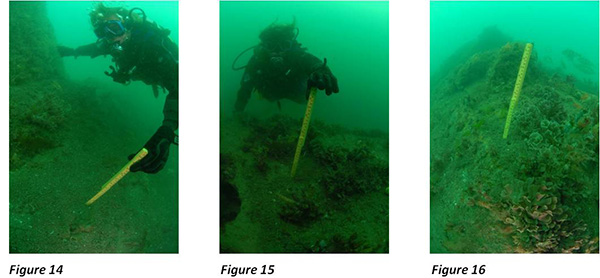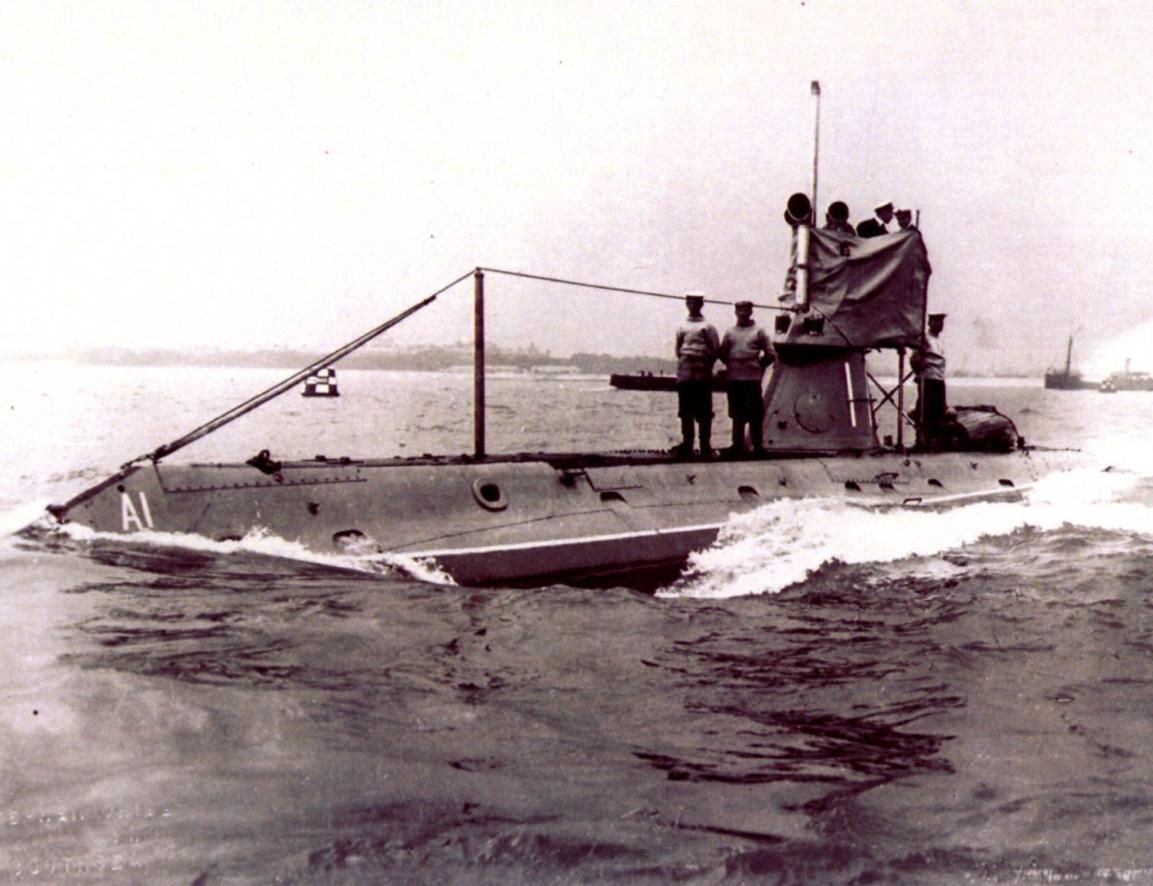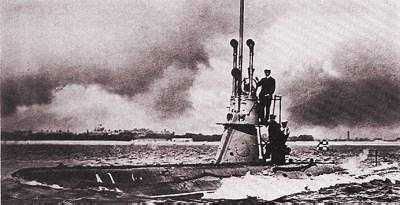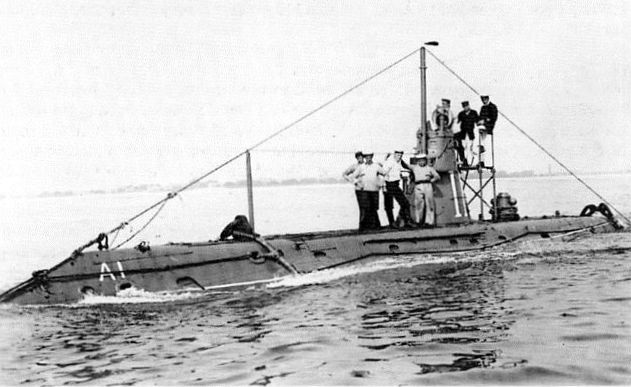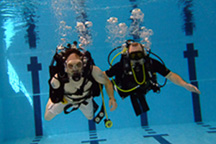Members of Southsea Sub-Aqua Club frequently dive along the South coast of England and have dived much of the rest of the UK and around the globe. The pages linked below provide some useful local information, as well as samples of what our members have done or are doing.
HM Submarine A1 Report 2009
- Details
- Category: HM Submarine A1
The following is an abstract of the 2009 report on the wreck of HM Submarine A1 submitted by the Licensee (our own DO, Martin Davies).
There are varying degrees of sediment build upon and in the wreck, but from the measurement points taken the general levels on the outside of the hull ranges from 1/4" to 1½", this is highly mobile sediment that is disturbed very easily by the slightest movement of water.
Figure 14 shows the sample area on the port side just below the Conning tower, Figure 15 shows the sample area forward of the torpedo loading hatches and Figure 16 shows the sample area to the rear of the conning tower.
HM Submarine A1 Report 2008
- Details
- Category: HM Submarine A1
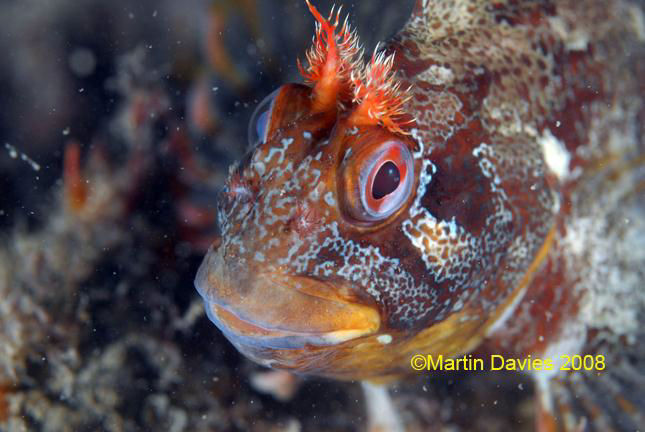
Extract from the report:
NAS Heritage Day 25 July 08
This involves a full day, made up of a visit to the RN Submarine museum at Gosport followed by a dive on HMS A1. It is difficult to arrange suitable dates as the tide is critical and there needs to be sufficient time for a visit to the submarine museum. There are very limited opportunities to arrange the event during the summer months when the visibility is generally at its best on the site.
This event was attended by 10 people and the day counts towards their Part 3 Qualification. In addition a freelance writer for Sports Diver attended the day and subsequently a full feature was published in Sport Diver magazine which promoted diving on the site.
I took the opportunity to examine one of the anomalies recorded in the Wessex Archaeology report and found it to be a large boulder around 10m from the starboard bow. I was also able to video the wreck on this opportunity. As a result of leaving the wreck and doing a sweeping search more items of debris have been observed in the seabed that look as if they were part of the main structure.
Tanks & Bulldozers - Final report
- Details
- Category: Tanks & Bulldozers Project
The Southsea Sub-Aqua Club Tanks & Bulldozers survey project far exceeded the aims of the project in many respects. What started off as an ambitious Branch and personal challenge has struck a chord with many in the diving community and beyond, bringing the activities of the Branch and the mystery that surrounded the site into the public domain.
With the support of many, the mystery of how 2 tanks, 2 bulldozers and a gun came to rest 8 miles south of Bracklesham, West Sussex has at last been solved.
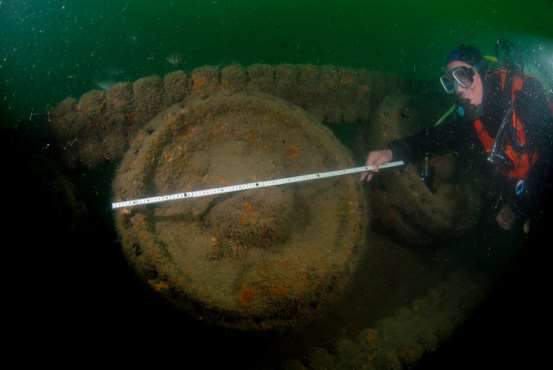
![]() Download the Final report here.
Download the Final report here.
HM Submarine A1 Report 2007
- Details
- Category: HM Submarine A1
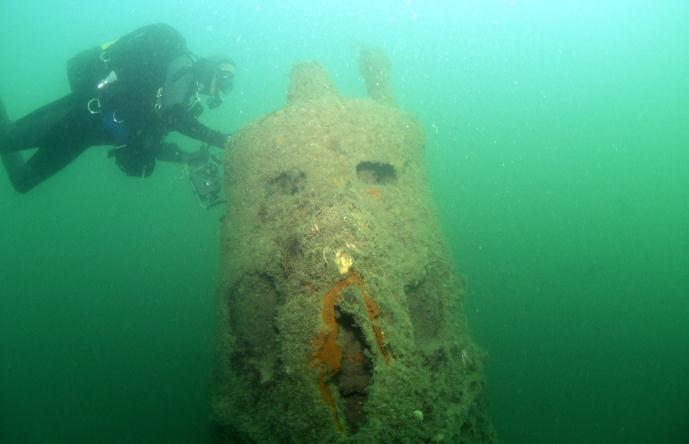
Extract from the report...
Diving Activities
Poor weather in April, May and June limited access to the site. The preferred window for diving is on a neap tide and on the flood. The unusual currents in the area mean that we have to look for a High Water neap and plan dives for 2.5 hours before HW(Portsmouth) These unique requirements limit the opportunities that are available to dive the site, especially at weekends. In Bracklesham Bay, where the wreck lays, the sea bed is mainly silt/clay and this has gradually built up inside the wreck since the hatches have been removed. Diving on the ebb tide has the added difficulty that weed and debris from Chichester harbour is in suspension around the wreck or passing by in the current making visibility even worse.
There were 2 NAS days comprising a brief at NAS (Fort Cumberland), a dive on A1 followed afterwards by a visit to Submarine Museum at Gosport. These Heritage dive days were very successful. There was a lot of interest and positive feedback from the event. Initially, 1 Charter Boat booking with Wight Diver but an additional day added to meet demand.
The other dives were completed using Southsea Sub-Aqua Club’s (SSAC) RIB and an SSAC charter booking with Wight Diver.
HM Submarine A1 Report 2006
- Details
- Category: HM Submarine A1
Extract from report:
For 95 years A1 has been resting in the murky waters of the Solent and has been subjected to strong tides that flow around that area. Despite this the wreck today is in remarkable condition when you compare it to other submarines in the area. It is intact and upright on the bottom in 14 metres of water. It actually still looks like a submarine. The pressure hull being the strongest part of the vessel is complete, however the outer casing has long gone and no longer visible, and this would have formed a walk way along the length of the submarine also shielding some mechanical drive gear such as the front opening torpedo hatch drive shaft, see photograph 2. The wreck appears to be laying roughly North South and its bow slightly proud of the seabed, whilst the stern has slowly sunk into the mud of the seabed. A scour is present around the bow area and has become a collection point for empty shell fish cases.


